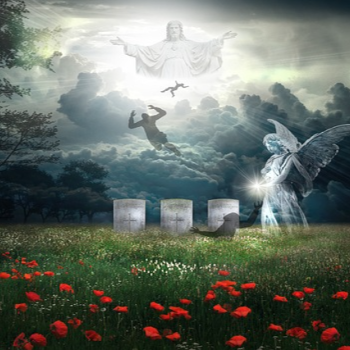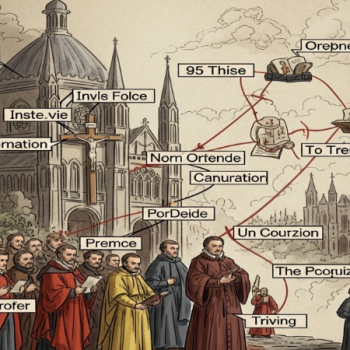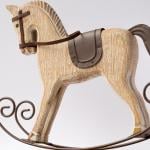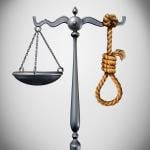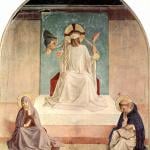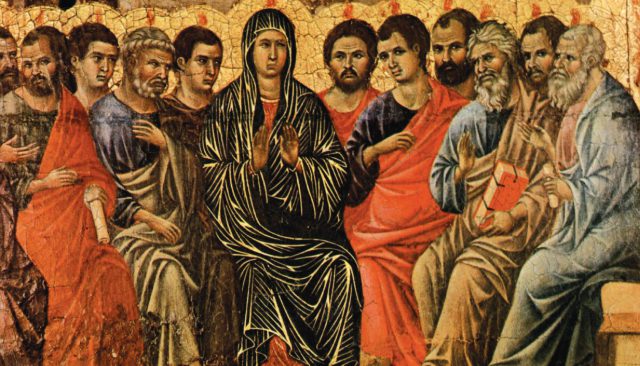
“Our profession of faith begins with God, for God is the First and the Last, the beginning and the end of everything.” – Catechism of the Catholic Church, Paragraph 198.
What we believe matters. Much more than science or syllogisms does the content of what we believe inform how we live. Of course, what one believes is particularly important when speaking of faith.
So to properly instruct Catholics on the content of the Catholic faith, the Catholic Church has developed three creeds (Latin for “I believe”). These are the Apostles Creed, the Nicene Creed, and the Athanasian Creed.
In the following work, I will commence a series of articles intended to provide an introduction to these foundational professions of the Catholic faith. I will provide some background on the Creed, the form of the Creed, and an analysis of the text.
The History And Use
Perhaps the most well-known of the creeds is the Apostles Creed. As legend would have it, the Creed was said to have been written by the Apostles themselves at Pentecost. However, it was likely written later, with evidence of its use (in some form) appearing circa AD 340. By the seventh century, the Apostles Creed in its current form was used throughout the Church.
Still, the name is appropriate as the Creed is an accurate summary of the faith shared by the Apostles (see Catechism of the Catholic Church, Paragraph 194).
Because the Apostles Creed is used to renew our baptismal promises, it is often recited during Lent and Easter.
The Apostles Creed
“I believe in God, the Father almighty, Creator of Heaven and earth, and in Jesus Christ, his only Son, our Lord, who was conceived by the Holy Spirit, born of the Virgin Mary, suffered under Pontius Pilate, was crucified, died and was buried; he descended into Hell; on the third day he rose again from the dead; he ascended into Heaven, and is seated at the right hand of God the Father almighty; from there he will come to judge the living and the dead. I believe in the Holy Spirit, the holy catholic Church, the communion of saints, the forgiveness of sins, the Resurrection of the body, and life everlasting. Amen.”
For the purpose of analyzing the Creed, it is helpful to divide it into twelve articles.
Article 1. “I believe in God, the Father almighty, Creator of heaven and earth.”
The first article is foundational for the other eleven. This article establishes belief in one God (contra polytheism and atheism), who is the cause of creation.
Article 2. “And in Jesus Christ, his only Son, Our Lord.”
The name Jesus means “God saves,” which is understood literally through Jesus’ death and Resurrection. “Christ” comes from the Greek for “Messiah,” which is Hebrew for anointed. As the only Son of God, Jesus is one with God (John 10:30). The use of the word Lord also points to the divinity of Christ. Lord is a transliteration of the tetragrammaton (YHWH), which refers to the God of Israel.
Article 3. “Who was conceived by the Holy Spirit, born of the Virgin Mary.”
This article considers the Incarnation of Christ, that is, God taking a human nature (Luke 1:31-38). The Incarnation is accomplished with the cooperation of Mary. By being conceived of the Holy Spirit and born of a virgin, Jesus is truly God and truly human.
Article 4. “Suffered under Pontius Pilate, was crucified, died and was buried.”
This article is a refutation of the Docetism heresy. The Docetists claimed that while Jesus was God, He only appeared to take a human form and nature. The Docetists essentially claimed that Jesus’ appearance as a man was an illusion, akin to a ghost.
The Apostles Creed refutes this heresy by stating that Jesus suffered and died. Two very human experiences.
Article 5. “He descended into hell; on the third day, he rose again from the dead.”
As a human being, Jesus experienced death, and as God, Jesus went to “Hell” to proclaim the good news of salvation. By Hell, the Creed is referring to Sheol. Sheol is a Hebrew word denoting the abode of the dead. By descending into Sheol, Jesus brings the righteous dead (those who died before Christ and are not damned) to Heaven.
On the third day, Jesus appears as the resurrected Lord to his apostles and other disciples. The witness of Scripture is clear on the Resurrection (1 Corinthians 15:3-8). The authors of the New Testament handed on the Resurrection stories as the truth they experienced personally (Dei Verbum, No. 19).
Article 6. “He ascended into Heaven, and is seated at the right hand of God the Father almighty.”
“I came from the Father and have come into the world. Now I am leaving the world and going back to the Father” (John 16:28). To be “seated at the right hand of God the Father” asserts Jesus’ power as God. Moreover, just as he was concerned for human beings on earth, Jesus continues to intercede for mankind from Heaven (Catechism of the Catholic Church, Paragraph 662).
Article 7. “From there, he will come to judge the living and the dead.”
The Apostles Creed clarifies that God, as the source of objective truth and morality, is the rightful judge of humanity (Matthew 25:31).
Article 8. “I believe in the Holy Spirit.”
Jesus promised that upon His ascension to the Father, He would send the Holy Spirit (John 14:16-17). This promise was fulfilled at Pentecost when the Spirit filled the apostles and others and established the Catholic Church (Acts 2:1-13).
Article 9. “The holy catholic Church, the communion of saints.”
Jesus introduced the “catholic” (or universal) Church through his life and established it on the rock of Peter (Lumen Gentium, No. 9). Jesus bestowed upon His apostles the sacraments and enjoined them to baptize the nations in the name of the Father, and of the Son, and of the Holy Spirit (Matthew 28:19).
The Church includes the saints in Heaven, as well as Catholics in purgatory, and on earth.
Article 10. “The forgiveness of sins.”
At the Last Supper, Christ instituted the priesthood (Luke 22:19). Since priests act in persona Christi (in the person of Christ), Catholic priests can forgive sins. This power is given to priests through Jesus’ own words, “Whose sins you forgive are forgiven them, and whose sins you retain are retained” (John 20:23). The Church celebrates this grace from God in the Sacrament of Reconciliation.
Article 11. “The resurrection of the body.”
The belief in the resurrection of the body is predicated upon Christ’s teaching. “For this is the will of my Father, that everyone who sees the Son and believes in him may have eternal life, and I shall raise him on the last day.”
Article 12. “And the life everlasting. Amen.”
The final article of the Apostles’ Creed affirms that those who are followers of Christ (and that is what a Christian is meant to be) will enjoy eternal life in the presence of God. “My sheep [followers of Christ] hear my voice; I know them, and they follow me. I give them eternal life, and they shall never perish.” (John 10:27-28).
Conclusion
In this work, I have sought to provide an introduction to the Apostles Creed. The Creed is a commitment, a profession of the Catholic faith. As a symbol of faith, the Creed is a summary of the truths of Catholicism (Catechism of the Catholic Church, paragraph 188).



